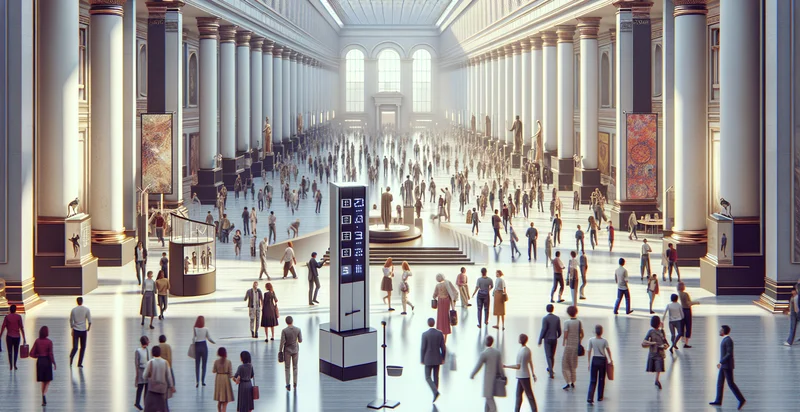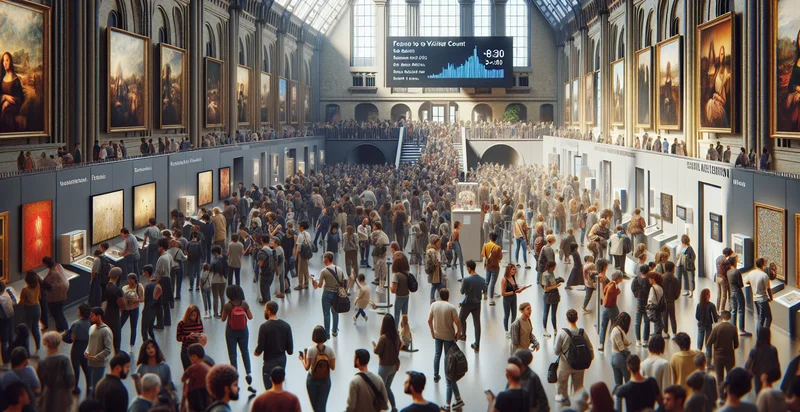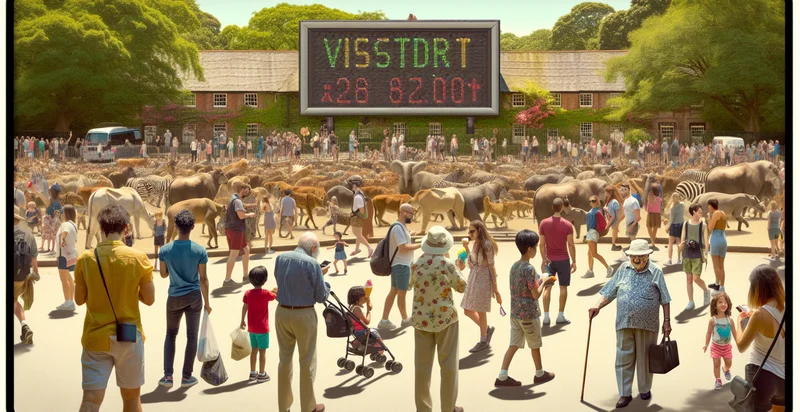Identify museum visitors count
using AI
Below is a free classifier to identify museum visitors count. Just upload your image, and our AI will predict the number of visitors in different areas of the museum. - in just seconds.

Contact us for API access
Or, use Nyckel to build highly-accurate custom classifiers in just minutes. No PhD required.
Get started
import nyckel
credentials = nyckel.Credentials("YOUR_CLIENT_ID", "YOUR_CLIENT_SECRET")
nyckel.invoke("museum-visitors-count", "your_image_url", credentials)
fetch('https://www.nyckel.com/v1/functions/museum-visitors-count/invoke', {
method: 'POST',
headers: {
'Authorization': 'Bearer ' + 'YOUR_BEARER_TOKEN',
'Content-Type': 'application/json',
},
body: JSON.stringify(
{"data": "your_image_url"}
)
})
.then(response => response.json())
.then(data => console.log(data));
curl -X POST \
-H "Content-Type: application/json" \
-H "Authorization: Bearer YOUR_BEARER_TOKEN" \
-d '{"data": "your_image_url"}' \
https://www.nyckel.com/v1/functions/museum-visitors-count/invoke
How this classifier works
To start, upload your image. Our AI tool will then predict the number of visitors in different areas of the museum..
This pretrained image model uses a Nyckel-created dataset and has 9 labels, including 1-5, 1000+, 101-200, 11-20, 201-500, 21-50, 501-1000, 51-100 and 6-10.
We'll also show a confidence score (the higher the number, the more confident the AI model is around the number of visitors in different areas of the museum.).
Whether you're just curious or building museum visitors count detection into your application, we hope our classifier proves helpful.
Related Classifiers
Need to identify museum visitors count at scale?
Get API or Zapier access to this classifier for free. It's perfect for:
- Visitor Engagement Analysis: This use case focuses on analyzing how different exhibits or areas of the museum attract visitors. By classifying and counting visitors in real-time, museums can identify popular sections and enhance future exhibitions based on visitor preferences, improving overall engagement.
- Capacity Management: Museums can utilize the 'museum visitors count' identifier to monitor real-time visitor numbers and manage crowd levels effectively. This information helps in ensuring compliance with capacity regulations and enhancing the visitor experience by preventing overcrowding.
- Marketing Strategy Optimization: By tracking how many visitors engage with specific exhibits over time, museums can tailor marketing efforts to promote less popular displays. Analyzing visitor traffic patterns assists in creating effective campaigns to drive interest in underappreciated collections.
- Revenue Forecasting: Accurate visitor counts provide data that can be leveraged for forecasting revenue generated from ticket sales, merchandise, and concessions. This insight aids in financial planning and resource allocation to improve profitability.
- Event Planning and Management: Museums often host events that can significantly affect visitor flow. By leveraging visitor count data, event planners can better understand attendance patterns, allowing for improved scheduling and resource distribution during high-traffic events.
- Exhibit Design and Improvement: Visitor count data can inform curators about which exhibits are most engaging and which are not attracting sufficient attention. This information is crucial for making informed decisions on future exhibit designs to enhance visitor satisfaction and learning experiences.
- Safety Protocol Implementation: Understanding visitor counts can directly impact safety protocols in the event of emergencies. Museums can develop and implement more effective evacuation strategies and safety measures, ensuring a quick response in case of overcrowding or emergencies.


